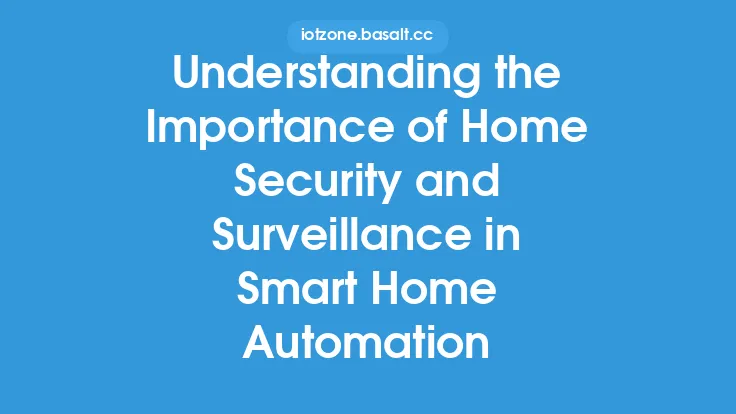The Internet of Things (IoT) has revolutionized the way we live and interact with devices, transforming our homes, cities, and industries into smart, connected environments. However, this increased connectivity also introduces significant security risks, as the sheer number of devices and the vast amounts of data they generate create a vast attack surface. At the heart of securing IoT lies the concept of secure communication, which ensures that data exchanged between devices, and between devices and the cloud or other endpoints, is protected from unauthorized access, tampering, and eavesdropping. Understanding the basics of secure communication in IoT is crucial for developing and deploying secure IoT solutions.
Fundamentals of Secure Communication
Secure communication in IoT is built on several fundamental principles, including confidentiality, integrity, and authenticity. Confidentiality ensures that only authorized parties can access the data. Integrity guarantees that the data is not modified during transmission. Authenticity verifies the identity of the sender and the receiver, ensuring that data is sent and received by the intended parties. To achieve these principles, various cryptographic techniques are employed, such as encryption (symmetric and asymmetric), digital signatures, and hash functions. Encryption converts plaintext data into unreadable ciphertext, protecting it from unauthorized access. Digital signatures and hash functions help in verifying the integrity and authenticity of the data.
Secure Communication Protocols
Several protocols are designed to facilitate secure communication in IoT, each with its strengths and suitable applications. For instance, the Transport Layer Security (TLS) protocol and its datagram-oriented variant, Datagram Transport Layer Security (DTLS), are widely used for securing communications over the internet. TLS is particularly effective for securing web communications and is the basis for HTTPS, the secure version of HTTP. DTLS, on the other hand, is more suited for applications that require secure datagram transport, such as in constrained networks where resources are limited. Other protocols like the Constrained Application Protocol (CoAP) are designed for use in constrained networks and devices, offering a lightweight alternative to HTTP for device management and data exchange.
Key Management and Exchange
A critical aspect of secure communication is key management, which involves generating, distributing, and managing cryptographic keys. Secure key exchange mechanisms, such as Diffie-Hellman key exchange and its variants, enable two parties to establish a shared secret key over an insecure channel without actually exchanging the key. In IoT, where devices may have limited computational power and memory, efficient key management strategies are essential. This includes techniques for secure key storage, revocation, and update, ensuring that cryptographic keys remain secure throughout their lifecycle.
Threats and Challenges
Despite the advancements in secure communication protocols and technologies, IoT devices and networks face numerous threats and challenges. These include man-in-the-middle attacks, where an attacker intercepts and alters communication, eavesdropping, where an attacker listens to communication to steal sensitive information, and denial-of-service (DoS) attacks, which can overwhelm devices and networks, making them unavailable. Additionally, the constrained nature of many IoT devices, in terms of power, memory, and processing capabilities, poses significant challenges to implementing robust security measures without compromising performance.
Implementing Secure Communication
Implementing secure communication in IoT requires a multi-faceted approach. First, it's essential to select appropriate secure communication protocols based on the specific requirements of the application, considering factors such as device capabilities, network characteristics, and the type of data being exchanged. Second, robust key management practices must be put in place to ensure the secure generation, distribution, and storage of cryptographic keys. Third, devices and networks must be regularly updated and patched to protect against known vulnerabilities. Finally, security should be considered from the design phase onwards, integrating it into the device and system architecture rather than treating it as an afterthought.
Future Directions
As IoT continues to evolve, with advancements in areas like edge computing, artificial intelligence, and 5G networks, the landscape of secure communication is also expected to change. Future directions include the development of more lightweight and efficient security protocols, the integration of security with emerging technologies like blockchain for enhanced trust and transparency, and the adoption of quantum-resistant cryptography to protect against future threats from quantum computing. Moreover, with the increasing importance of IoT in critical infrastructures and personal lives, regulatory frameworks and standards for IoT security are likely to become more stringent, driving the development of secure communication solutions that meet these requirements.
Conclusion
Secure communication is the backbone of IoT security, enabling devices and systems to exchange data in a way that is confidential, integrity-protected, and authentic. Understanding the basics of secure communication, including the principles of cryptography, secure communication protocols, and key management, is essential for developing and deploying secure IoT solutions. As the IoT ecosystem continues to grow and evolve, addressing the challenges and threats to secure communication will remain a critical priority, driving innovation and the adoption of robust security practices to protect the integrity and privacy of IoT data.





